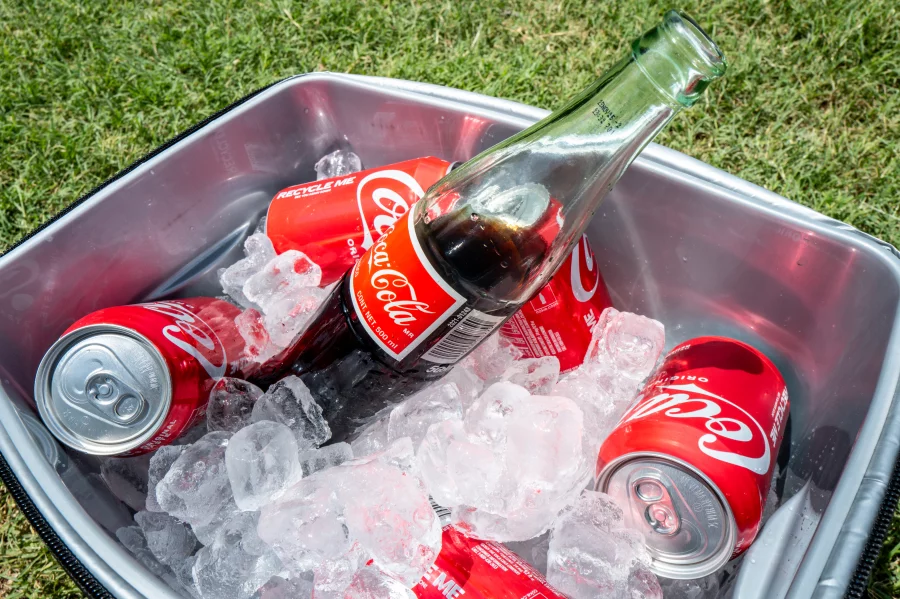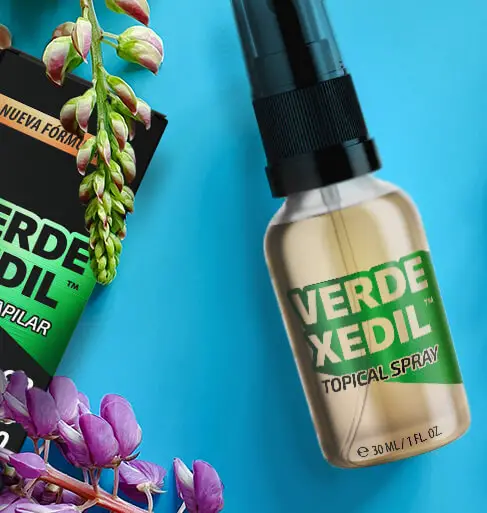Coca‑Cola recently announced that it will introduce a cane sugar–sweetened Coke in the U.S., following a social media post by President Donald Trump. The company’s CEO James Quincey made clear this is an “and” strategy, not an “or” – a new cane‑sugar version will complement the regular HFCS‑sweetened Coke rather than replace it. After all, Mexican Coke (made with cane sugar) has long been sold in the U.S., albeit at a much higher price. But for soda lovers the big question is: Is a Coke made with cane sugar any healthier than the one made with corn syrup? We took a deep look at the science, expert opinions and public health guidance. Spoiler: whether it’s cane sugar or high‑fructose corn syrup, the health risks of sugary soda remain largely the same – the key is less sugar, not just a different sugar.
Why Coke is adding a cane‑sugar version
In July 2025 Coca‑Cola confirmed plans to roll out a cane sugar–sweetened Coke in the U.S. (amid much fanfare on social media). Quincey explained to investors that this new offering would “reflect consumer interest in differentiated experiences” – essentially giving fans an alternate taste option. (He stressed Coke will continue using a lot of HFCS in its drinks, so this isn’t a wholesale formula change.) The cane‑sugar cola will be marketed as a premium alternative, similar to how “Mexican Coke” has long been sold as a niche cane‑sugar product at grocery stores.
Even if Coca‑Cola adds cane sugar to a special version of Coke, health experts point out that “cane sugar” versus “corn syrup” doesn’t change the fact that you’re drinking a high‑sugar soda.
Coke’s own statements underline that this switch is more about taste and marketing than health. The company reminded the public that high‑fructose corn syrup (HFCS) is “safe” and has about the same number of calories per serving as table sugar, being metabolized similarly in the body. The American Medical Association even weighed in, noting there’s “insufficient evidence” to single out HFCS as uniquely harmful – HFCS is “no more likely to contribute to obesity than table sugar or other full‑calorie sweeteners”. In other words, swapping one for the other won’t suddenly make Coke health food.
Cane Sugar vs. Corn Syrup: Not a health win
Chemically, cane sugar (sucrose) and HFCS both are very similar. Cane sugar is a disaccharide of 50% fructose and 50% glucose (tightly bonded together), while HFCS (used in most sodas) is roughly 45–55% fructose and the rest glucose, in free form. In practical terms, calorie‑for‑calorie they’re alike. Both are pure added sugar, and both load your body with the same basic ingredients. The real difference is that HFCS is made from processed corn starch via enzymes, whereas cane sugar is refined from sugar cane or beets. But process-wise, cane sugar is hardly “natural” either – it’s soaked, boiled and refined into crystals.
Importantly, both sweeteners pack about 4 calories per gram. A 12‑ounce soda (a “can” of Coke) contains roughly 140–150 calories and 39 grams of sugar, whether sweetened with cane sugar or HFCS. Coke itself noted that HFCS has about the same calories as table sugar and is metabolized similarly. And in fact, research finds no magic difference between them in terms of weight gain or blood sugar when consumed in typical amounts. A 2022 meta‑analysis of multiple studies found that people drinking HFCS‑sweetened beverages did not gain more weight or body fat than those drinking sucrose (table sugar) drinks. The only subtle effect: HFCS was associated with a slightly higher C‑reactive protein (CRP) level – a marker of inflammation – than sucrose. But overall there were no significant changes in BMI, waist size, cholesterol or blood glucose between HFCS and sucrose groups.
Key differences between HFCS and cane sugar:
-
Composition: Cane sugar = 50% fructose + 50% glucose; HFCS-55 (in cola) ~55% fructose + 45% glucose.
-
Calories: Both ~4 kcal/g. A standard can has ~39 grams of sugar no matter which is used.
-
Processing: HFCS is industrially enzymed from corn starch; sucrose is refined from cane/beets. However, both are refined sugars, and neither offers nutritional benefits (no fiber, vitamins, etc.).
-
Health impact: Experts and research find no clear health advantage to one over the other. As one nutritionist put it, “on average there isn’t likely to be a major difference between soda sweetened with HFCS and soda sweetened with cane sugar aside from taste”.
Even the cola giant agrees: HFCS and sugar produce roughly the same metabolic effect. Coca‑Cola’s statement (backed by health authorities) reminds us that HFCS is “a sweetener made from corn… safe, same number of calories as table sugar, and is metabolized in a similar way by your body”. In fact, the AMA’s stance is that HFCS should not be demonized any differently than other sugars. So for health purposes, cane sugar Coke is still just a sugar‑sweetened beverage – trading one form of sugar for another.
The real risks: Sugar‑sweetened soda and your health
Whether sweetened with cane juice or corn syrup, Coke (and all sugary sodas) deliver a big dose of added sugar. And a mount of evidence links high intake of sugar‑sweetened beverages (SSBs) to chronic disease. In fact, one comprehensive review led by Harvard researchers concluded that “intake of these [sugar] beverages has been consistently linked to increased risk of obesity, type 2 diabetes and cardiovascular disease”. Why? There are a few reasons:
-
Liquid calories don’t fill you up: When you drink a can of Coke, you often don’t compensate by eating less food later. Over time that surplus sugar calories lead to weight gain.
-
Blood sugar spikes: A sugary soda rapidly raises blood glucose, prompting insulin release. Chronic high insulin can promote fat storage and eventually insulin resistance.
-
Fructose goes to the liver: Fructose (half of sucrose or a bit more in HFCS) is processed mainly by the liver. In large amounts it drives new fat production (de novo lipogenesis) and can cause fatty liver and high blood triglycerides. Over time, this contributes to metabolic syndrome.
Dietitians underscore these points. As one Cleveland Clinic nutritionist explained, “high amounts of fructose are processed by the liver, which can lead to fatty liver or high levels of triglycerides… [and] can lead to metabolic issues, obesity and diabetes”. In other words, drinking too much sugar — whether cane or corn‑derived — is what raises the risk of obesity, type 2 diabetes and heart problems. Regular soda consumption remains “the wrong thing to be doing” for most people’s health.
Here are some health concerns linked to regular soda drinking:
-
Obesity & weight gain. Sugary drinks add calories quickly, driving up overall intake.
-
Type 2 Diabetes. Excess sugar intake, especially liquid sugar, is a well‑known risk factor for developing insulin resistance and diabetes.
-
Non‑alcoholic fatty liver disease (NAFLD). Chronically overloading on fructose can cause fat buildup in the liver. Studies show rising sugar consumption parallels rising NAFLD rates.
-
Cardiovascular risk. High sugar diets raise blood pressure, inflammation, and triglycerides – all bad for the heart.
In short, soda pop — cane sugar or HFCS — still delivers “rocket fuel” for weight gain, as one nutritionist bluntly put it. The best way to protect your health is to cut back on soda altogether, not just swap the sweetener.
Expert opinions: “Different sugar, same problem”
Health experts generally agree that swapping HFCS for cane sugar won’t magically make Coke healthy. After Coca‑Cola’s announcement, nutritionists and scientists quickly chimed in. Eva Greenthal from the nonprofit Center for Science in the Public Interest advised, “Excess consumption of sugar from any source harms health. To make the food supply healthier… focus on less sugar, not different sugar.”. Similarly, University of California nutritionist Angela Zivkovic said that beyond taste, the two Colas would be “not dramatically” different health‑wise. She noted that cane sugar might slow absorption just a bit, but it doesn’t make the drink healthier in any meaningful way. “They’re both just sugar-sweetened beverages… rocket fuel,” she warned
While both experts emphasize “less sugar is key,” they did note one minor point: cane sugar is a bit more expensive, so companies might use less of it. As a Cleveland Clinic dietitian put it, if a manufacturer has to pay more for sugar cane, “the hope is maybe they will use less” in each bottle. But she immediately added, “really the key here should be that we should be consuming less sugar”. In fact, she suggested an ideal scenario would be if Coke simply cut its sugar content by 25% — “and then we’ve really made some progress”.
In other words, the experts aren’t impressed by the switch itself. Cane sugar Colas may taste slightly different, but nutritionally they’re the same category of empty‑calorie drinks. Zivkovic summed it up: “Is it going to be healthier? I really don’t think you could say that”.
Natural vs. processed: The perception trap
Why do many people assume cane sugar is healthier? Largely because it sounds more “natural” and because HFCS has gotten a bad rap. But nutrition science says: added sugar is added sugar. A diabetes expert from the University of Colorado points out that HFCS’s villainy is mostly a myth. While fructose (the main component of both sweeteners) can drive issues like fatty liver when consumed in excess, the differences between fructose from cane sugar and HFCS are minor. “Honestly, the sugars are all fairly similar in their chemical makeup and in how our body processes them,” she explains, “with the exception of fructose”. (Even then, that exception applies equally to cane sugar, which is half fructose.)
Nutrition communicators have long warned that the industry’s marketing confuses things. The Corn Refiners Association (representing HFCS makers) once touted that “your body can’t tell the difference” between corn sugar and cane sugar. Public health advocates like Michael Jacobson of CSPI agree: HFCS does not exist in nature, but claims it is uniquely harmful are “urban myths”. Jacobson notes that nutritionally HFCS and sucrose may be identical. In plain language: whether your cola is sweetened with cane juice or corn syrup, it all ends up as blood sugar and fat in your body.
Bottom line: both types of sugar are “added” sugars – meaning they’re extra calories outside of whole foods. U.S. adults get a shocking 66 pounds of added sugar per person per year (nearly 20 teaspoons a day) on average. The American Heart Association recommends only 6–9 teaspoons per day. So the real issue is not the type of sugar Coke uses, but the amount of added sugar Americans are guzzling.
What soda drinkers should do instead
If you’re a fan of Coke (or any sweet soda), here’s the takeaway: treat this switch as a taste change, not a health halo. A cane sugar Coke still has tons of sugar. Regularly drinking it carries the same risks as any soda. Think of it this way: whether it’s HFCS or cane sugar, it’s still just sugar that your body will handle in the same basic way. So the focus should be on drinking less soda altogether.
Here are some tips for cutting back on sugary drinks (cane‑sugar Coke or otherwise):
-
Swap for water or sparkling water. The best alternative to any soda is plain water. Flavored (unsweetened) sparkling water or infusing water with fruit slices can satisfy the fizz and flavor without added sugar.
-
Downsize your servings. Instead of a 20‑oz bottle, have a 12‑oz can. Or split a soda with a friend. Every ounce less means 4 fewer grams of sugar.
-
Limit frequency. Make soda a rare treat (e.g. one or two cans per week) instead of a daily habit. Mark days on the calendar as “soda free.”
-
Read labels. A 12‑oz Coke has about 39 g (9+ teaspoons) of sugar. Knowing this can help you keep track of your daily sugar budget.
-
Balance with activity. Exercise can help mitigate some metabolic risks, though it won’t completely cancel sugary calories. Being active and fit always helps blood sugar control and overall health.
-
Explore alternatives. When craving something sweet, try 100% fruit juice (limited to a small glass) or a flavored seltzer. In drinks, swap cola for coffee or tea, using minimal sugar or a natural sweetener like stevia if needed.
Ultimately, nutrition experts stress that cutting back on added sugars from all sources is the best step. The cane sugar version of Coke isn’t a license to drink more — it’s still a high‑sugar beverage. As one health scientist put it, “the key here should be that we should be consuming less sugar”, not just switching the label.
The verdict
Coca‑Cola’s new cane sugar Coca‑Cola may be fun for soda enthusiasts and give a nod to nostalgic taste, but it won’t make Coke healthy. Nutritionally, it’s still a sugary soda. For regular soda drinkers, the take‑home is unchanged: be aware of the health risks of soda’s sugar, and aim to cut back. Switching to “real sugar” Coke is not going to shield you from obesity, diabetes or fatty liver any more than the corn‑syrup Coke does. Keep enjoying your cola sparingly — and remember that plain old water is the real health hero when it comes to hydration and weight control.
Sources: Coca‑Cola’s official announcements theguardian.comtheguardian.com; expert commentary from nutritionists and studies abcnews.go.comabcnews.go.comabcnews.go.comabcnews.go.com; Harvard review of sugary drink risks pmc.ncbi.nlm.nih.gov; scientific meta-analysis on HFCS vs sucrose pmc.ncbi.nlm.nih.gov; plus fact-checks and public health resources theguardian.comnews.cuanschutz.eduen.wikipedia.org.












Leave a Reply